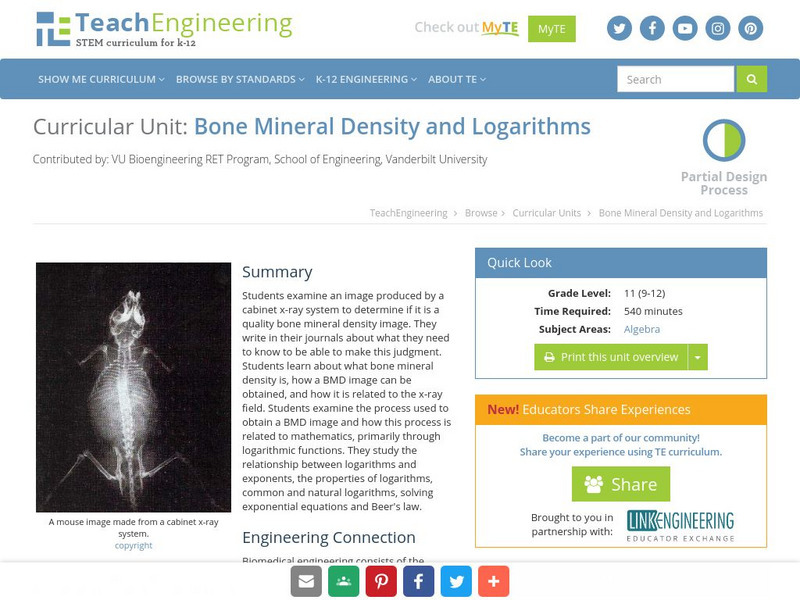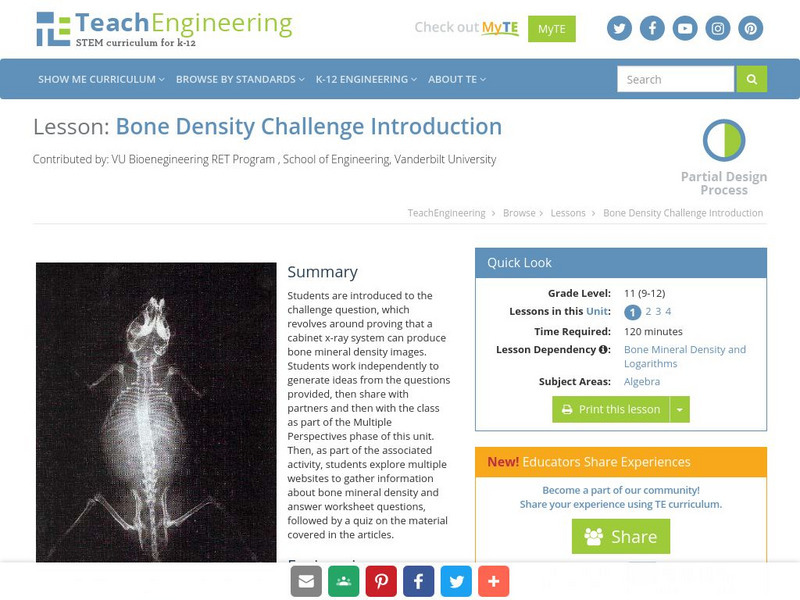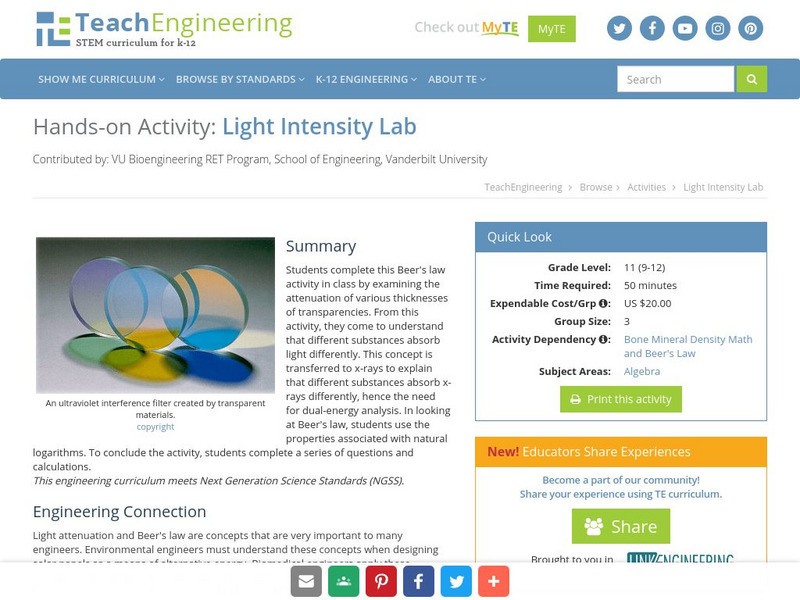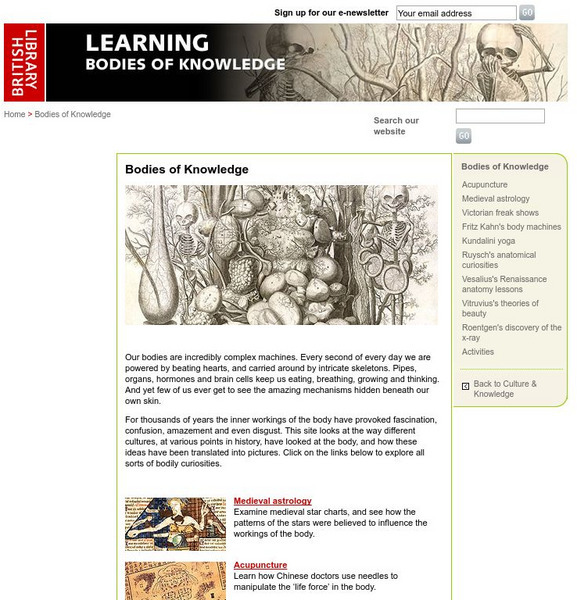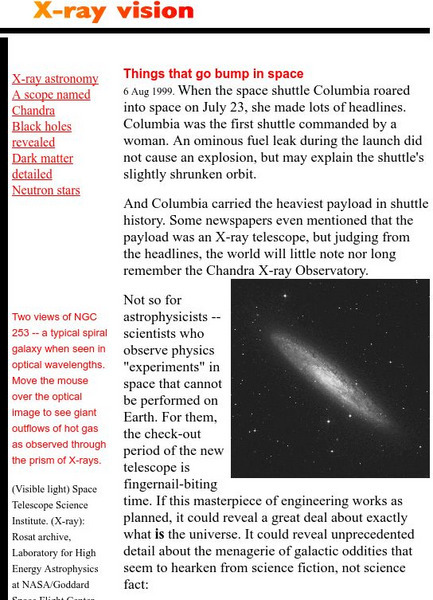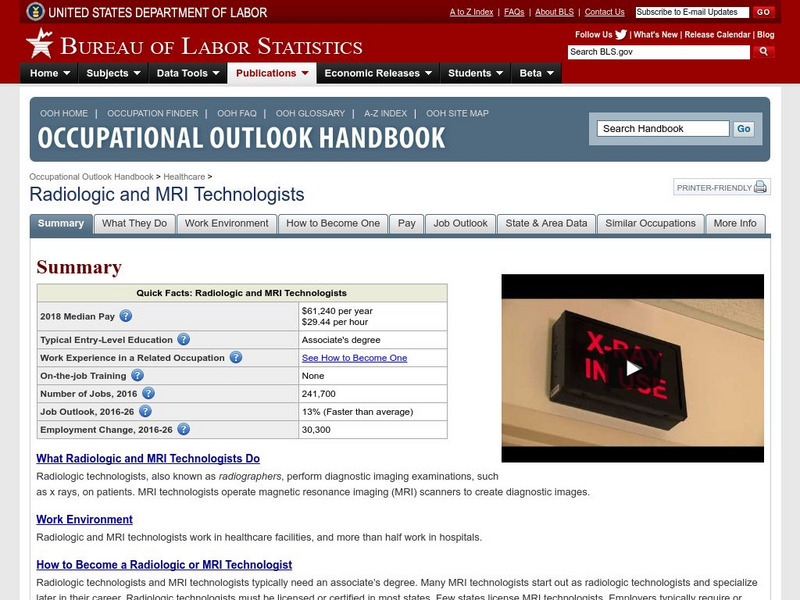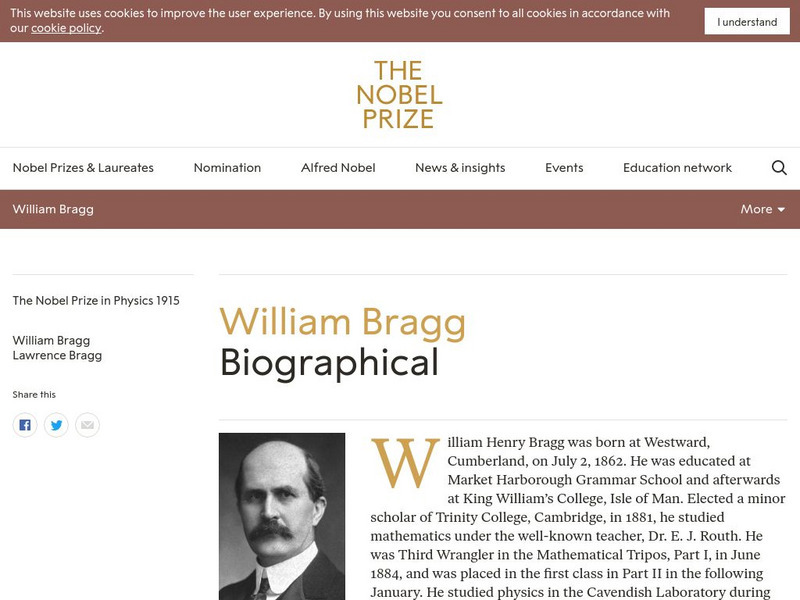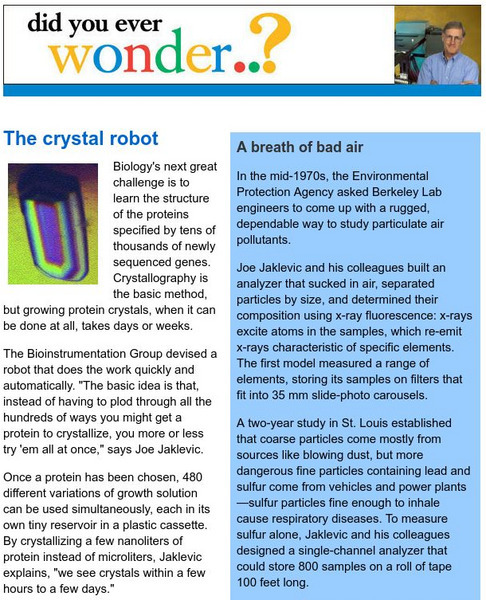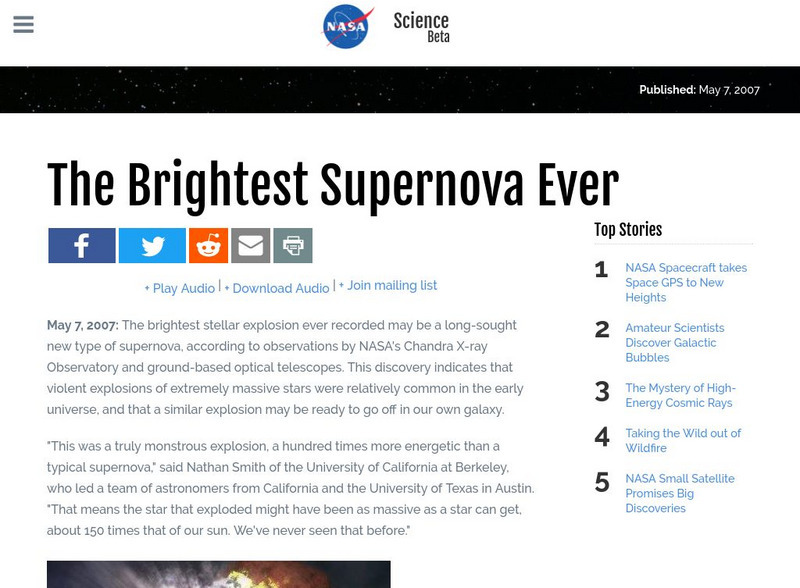Nobel Media AB
The Nobel Prize: The Nobel Prize in Chemistry 1964
This site from the Nobel eMuseum allows you to read about the recipient of the 1964 Nobel Prize in Chemistry, Dorothy Crowfoot Hodgkin (1910-1994 CE), who was honored "For her determinations by X-ray techniques of the structures of...
TeachEngineering
Teach Engineering: Bone Mineral Density and Logarithms
Students examine an image produced by a cabinet x-ray system to determine if it is a quality bone mineral density image. Students write in their journals about what they need to know to be able to make this judgment. Students learn about...
TeachEngineering
Teach Engineering: Exploring Bone Mineral Density
In this activity, students will explore two given websites to gather information on Bone Mineral Density and how it is measured. They will also learn about X-rays in general, how they work and their different uses, along with other...
TeachEngineering
Teach Engineering: Bone Density Challenge Introduction
Students are introduced to the challenge question, which revolves around proving that a cabinet X-ray system can produce bone mineral density images. Students work independently to generate ideas from the questions provided then share...
National Health Museum
Access Excellence: A Tour of the Human Skeleton
Click on the interactive skeleton and see actual X-rays of different bones. Compare normal bone x-rays with x-rays of damaged bones.
TeachEngineering
Teach Engineering: Light Intensity Lab
Students complete this Beer's Law activity in class. Students examine the attenuation of various thicknesses of transparencies. From this activity, students will understand that different substances absorb light differently. This can...
British Library
British Library: Bodies of Knowledge
Series of illustrated essays on the different ways that the human body has been represented in art and science across history considers medieval astrology, the ancient Chinese practice of acupuncture, Vitruvius's notion of body symmetry,...
University of Wisconsin
The Why Files: Things That Go Bump in Space
Contains an introduction to x-ray astronomy, describing how x-rays are being used by scientists to learn about the universe. Also contains links to sites describing black holes, dark matter, neutron stars, and how they are investigated...
Wikimedia
Wikipedia: Wilhelm Rontgen
This site from the Wikipedia encyclopedia provides a biography on Wilhelm Rontgen discusses his discovery of what became known as x-rays. The article also provides some information on his education and achivements throughout his life.
US Department of Labor
Bureau of Labor Statistics: Radiologic Technologists
A very informative site describing the profession of radiologic technologist/technician. Contains sections on nature of the work, working conditions, employment opportunities, qualifications, job outlook, and earnings.
University of Colorado
University of Colorado: Physics 2000: Electromagnetic Waves
Using a student-teacher dialogue format, this page discusses the nature of light as an electromagnetic wave and the electromagnetic spectrum.
Lawrence Berkeley National Laboratory
Berkeley Lab: Micro Worlds Project: Advanced Light Source
A discussion of the Advanced Light Source (ALS) facility and its use in material analysis and medicine.
Nobel Media AB
The Nobel Prize: William Henry Bragg Biographical
The Nobel Foundation provides a biography of Bragg. This site focuses primarily on his activities and accomplishments as a scientist.
NASA
Nasa: Imagine the Universe: Pulsars
Resource explores what a pulsar is, as well as what is currently known about this phenomenon. Content includes a focus on x-ray observations of pulsars, and gamma-ray pulsars.
Nobel Media AB
The Nobel Prize: The Nobel Prize in Physics 1901: William Conrad Rontgen
In 1901, Wilhelm Conrad Rontgen won the Nobel Prize for Physics because of his work with the x-ray. The site includes a picture of Rontgen along with biographical information, his Nobel lecture, and other resources, such as illustrated...
Lawrence Berkeley National Laboratory
Berkeley Lab: Did You Ever Wonder? The Crystal Robot
Students examine x-ray crystallography. The resource explores the structure of the proteins specified by tens of thousands of newly sequenced genes. Additional resources are included.
Cosmo Learning
Cosmo Learning: Applied Science and Technology 210: Electrical Engineering
A collection of video lectures from a course that explores the application of electrical engineering topics. Webpage includes twenty-eight lectures from a professor at the University of California, Berkeley. Lectures vary in length and...
National High Magnetic Field Laboratory
Magnet Academy: Peter Debye
Peter Debye carried out pioneering studies of molecular dipole moments, formulated theories of magnetic cooling and of electrolytic dissociation, and developed an X-ray diffraction technique for use with powdered, rather than...
NASA
Nasa Science: The Brightest Supernova Ever Seen
Article explores the supernova of a star that is possibly "150 times more massive than our Sun." The primary observations of the explosion were accomplished through the Chandra X-ray Observatory. (May 7, 2007)
NASA
Nasa: Imagine the Universe: X Ray Binary Stars
Site provides a brief introduction to binary stars. Additional resources for students and teachers on this topic are offered as well as related topics.
National Inventors Hall of Fame
National Inventors Hall of Fame: Robert Ledley: Diagnostic X Ray System/cat Scan
Read about the inventor of the CAT Scan, Robert S. Ledley. This site includes a brief bio and information on the invention's impact on the medical world and patients.
University of Pittsburgh
University of Pittsburgh: X Ray Crystallography Lab
This is the University of Pittsburgh crystallography departments home page. The site has links to programs, facilities, research, etc.
BBC
Bbc: Gcse Bitesize: Radiation Treatment
X-rays, gamma rays and beta particles are all used in medicine to treat internal organs. X-rays are produced by firing electrons at a metal target and gamma rays are emitted by the nucleus of radioactive atoms. Gamma rays are used to...
Other popular searches
- Animal X Rays Preschool
- Animal X Rays
- X Rays Mri Bones
- Preschool Lessons X Rays
- X Rays Art Preschool
- Understanding X Rays
- Bones and X Rays
- X Rays and Scans
- X Rays Preschool
- X Rays Tech
- X Rays Tech Schools
- Radiation and X Rays

